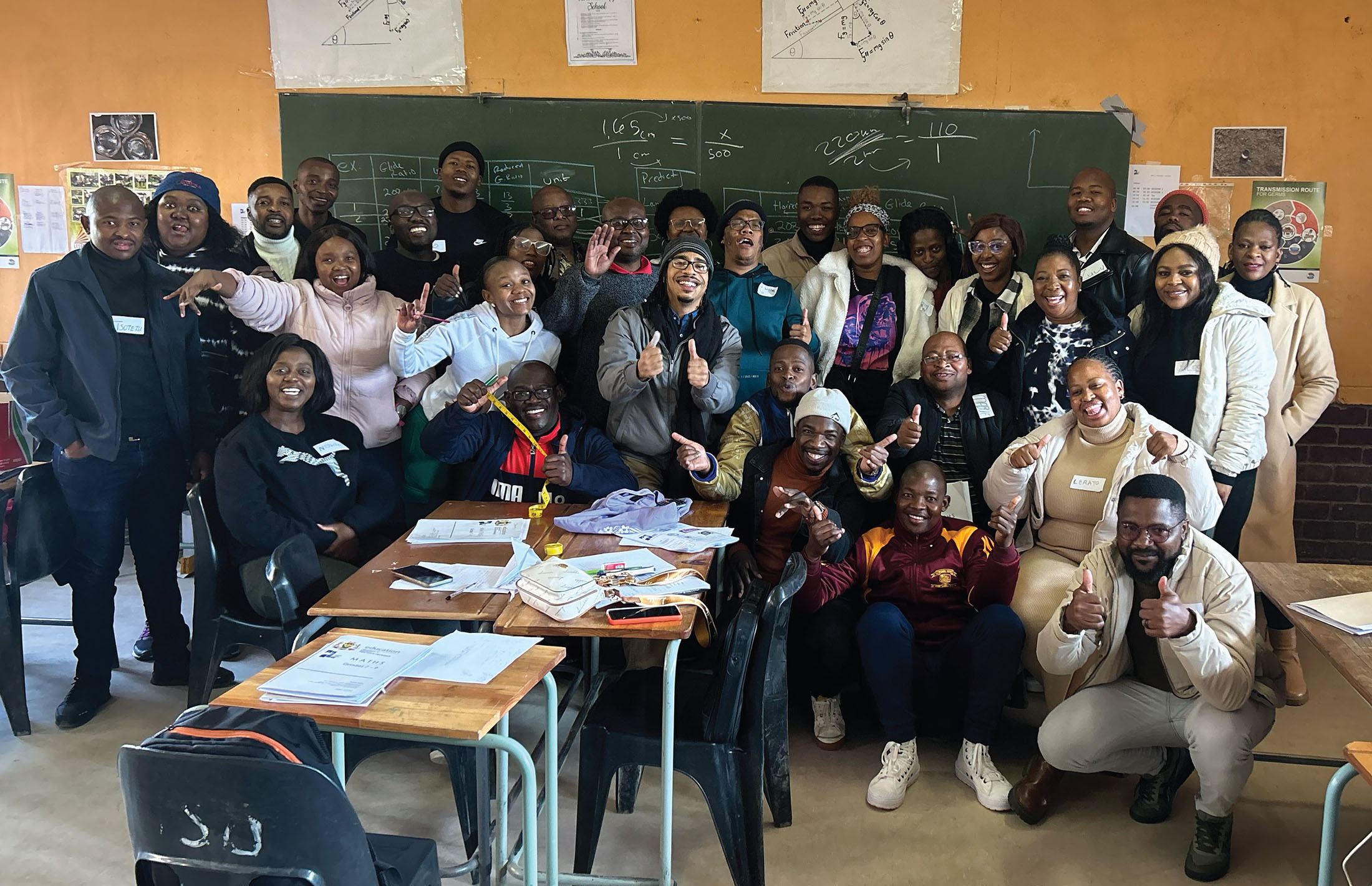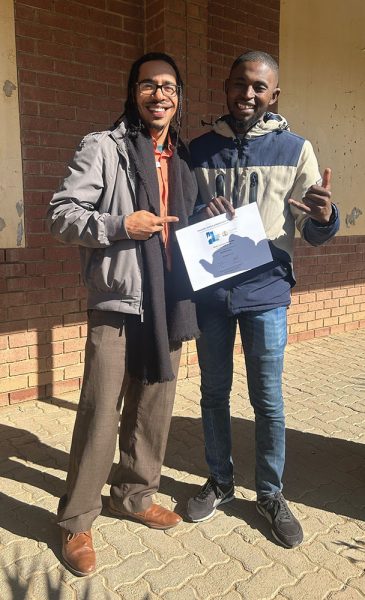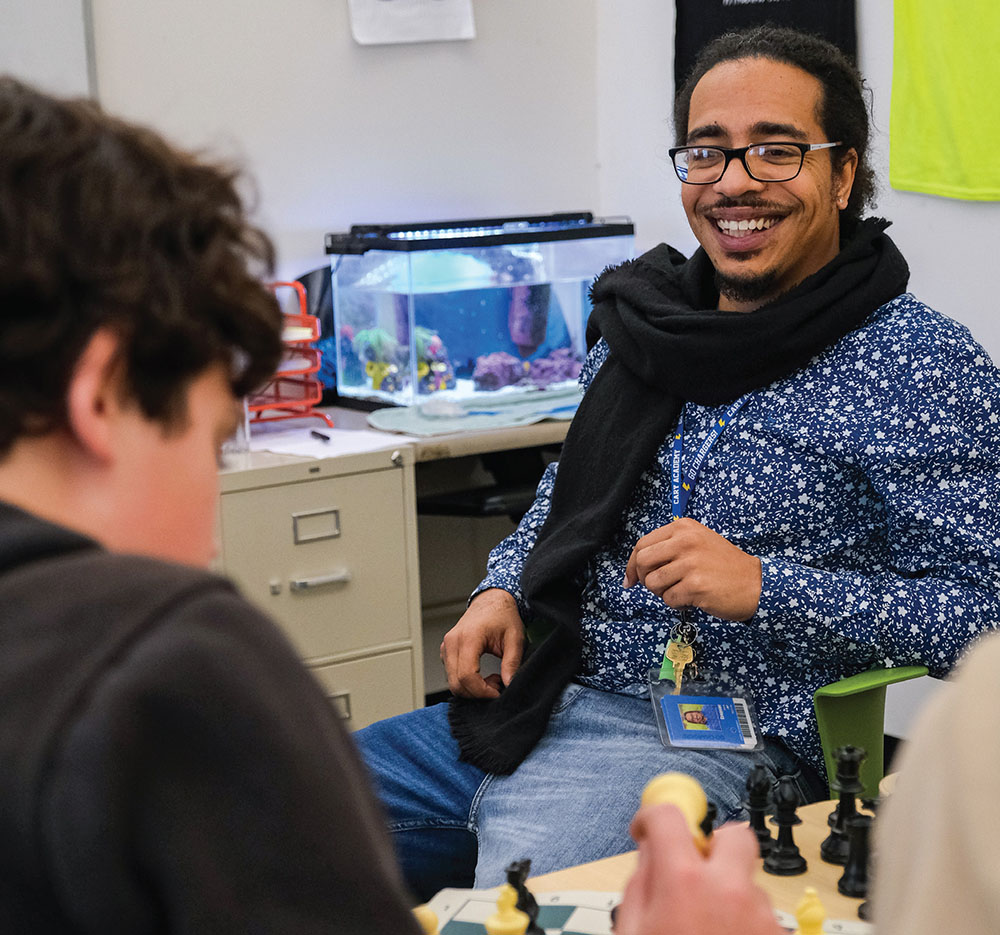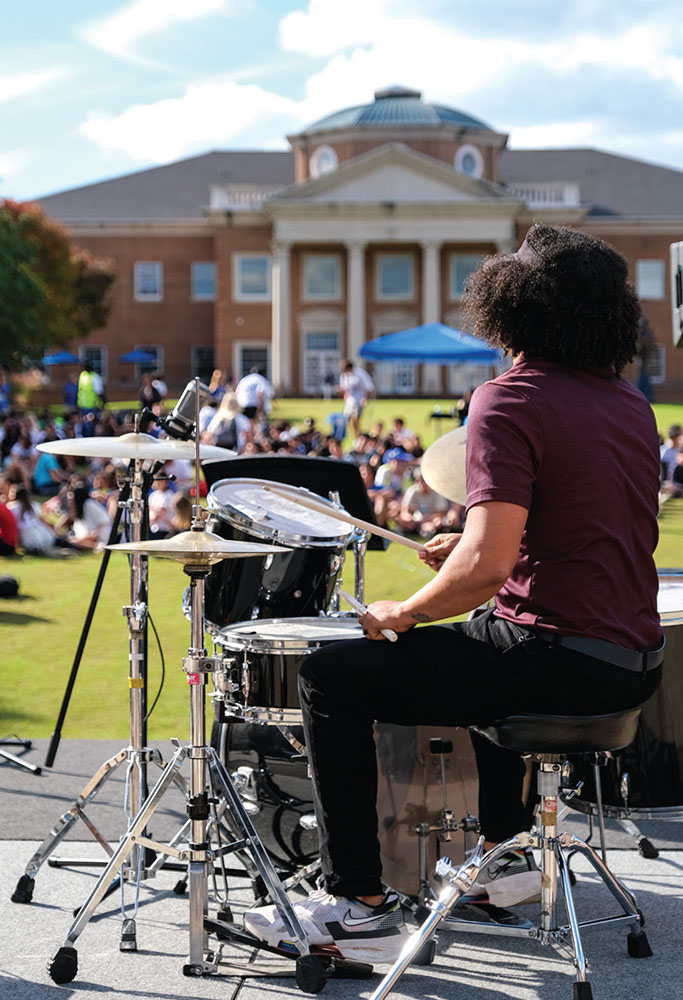A LIFE-ALTERING EMAIL LANDED IN MIDDLE SCHOOL MATH TEACHER ERICK CREPSAC’S INBOX LAST SPRING.
Originating from CA’s Center for Community Engagement, the message presented a compelling proposition: a summer workshop designed to empower STEM teachers of color in rural South Africa. The goal? To help redress educational disparities caused by the racist apartheid-era Bantu Education Act (BEA).
“The BEA was designed to force people of color into the unskilled labor market; it restricted the teaching of math and science to Black South Africans,” explains Crepsac.
“Post-apartheid, many South African teachers of color are in the impossible position of instructing math and science classes that they themselves were never allowed to take. These teachers often feel inadequate, reluctant to even enter a classroom. They know they aren’t prepared—that their students may have questions they cannot answer.”
Crepsac, who had never ventured out of the country, jumped at the chance to help. “It felt like I had a personal and moral responsibility to do so.”

CALCULATING CHANGE
Last summer, funded by a CA Innovation Grant, Crepsac embarked on a
transformative journey with Teachers Across Borders—a nonprofit committed to offering professional development for educators in emerging countries.
Joining a cadre of North American educators, Crepsac immersed himself in a three-week-long workshop in South Africa, where he gained firsthand insights into the challenges confronting local STEM teachers of color. In response, the team offered targeted training in classroom best practices, pedagogies, and curricula finely tuned to address local needs.
“I think what sets Teachers Across Borders apart—from even similarly named
programs—is that there were no presumptions about what South African teachers needed based on data points studied from afar. It is an approach that respects and empowers local teachers, rather than swooping in with a savior complex or potentially damaging assumptions,” shares Crepsac.

As in a true partnership, the learning was reciprocal. Crepsac not only taught participants, but also had opportunities to learn and refine his own instructional and classroom leadership techniques based on peer feedback—lessons he has since brought back to his CA classroom.
Most notable? Crepsac’s teaching philosophy underwent a profound shift. Moving away from a more lecture-based approach, he now aims to be more of a “guide on the side” that encourages his students to take the lead. It’s an intentional shift that fosters a sense of empowerment among students, transforming the classroom into a space for collaborative learning.
“I’ve learned when to lecture and when to intentionally step aside and encourage those who comprehend a concept to articulate and explain it,” shares Crepsac. “I’m practicing the wait—resisting the urge to intervene immediately when a student is grappling with a problem—and allowing them the space and time to puzzle through it either independently or with classmates.”
Describing the experience as “transcendental and transformative,” Crepsac reflects on the tangible impact witnessed during his face-to- face interactions in South Africa.
“You could see the effects of what we were sharing, the power in it. You could see teachers starting to feel more secure in themselves, and their excitement to take what they were learning back to their schools and colleagues. It was an incredible and humbling experience— and one that I take a lot of pride in.”
FINDING PURPOSE
For those who know him, Crepsac’s participation with Teachers Across Borders— and his palpable joy in learning, connecting, and empowering others—comes as no surprise.
“I’ve always loved helping people, loved sharing information,” reflects Crepsac, recalling his childhood inclination to start conversations and share newfound knowledge on the playground.
His natural and obvious inclination to connect through knowledge led to a common lifelong refrain from friends and peers: “You should become a teacher.”
However, while teaching might have been an obvious career choice, it wasn’t always a welcome suggestion. “While it was something that I had heard my whole life, it was ultimately something I needed to arrive at on my own, in my own time,” shares Crepsac.
Instead, at North Carolina Central University, Crepsac majored in math, drawn to its flexibility and universality, a point he commonly underscores with his students. “Math is everywhere. The skillset it offers— problem-solving, identifying patterns, reverse engineering, attention to detail—is transferable and valuable no matter what career path you choose.”
As graduation approached, however, Crepsac found himself at a crossroads—and confronting a profound moment of self-discovery.
“Contemplating my future, I realized that this idea of “becoming a teacher” was an illusion. I never had to “become” a teacher. I just had to accept myself for who I was and stop running away from my natural calling. It was a self-acceptance moment; a realization that, at heart, I am a teacher. I love teaching.”

BEYOND THE BOARD
The realization made, he never looked back. After earning his math degree, Crepsac garnered valuable classroom experience in various Triangle-area educational institutions before finding his way to Cary Academy in 2021.
At CA, he aims to bring math to life with thought-provoking conversations and
experiential projects that enable his students to connect mathematical concepts to real- world relevance. “Learning is not meant to be compartmentalized, but connected,” Crepsac explains.
Fittingly, the process of self-discovery and self-acceptance that paved Crepsac’s path to teaching is one mirrored in his classroom, as he helps students consider (and reconsider) their own personal narratives, identities, and trajectories.
“Getting middle schoolers excited about math? It can be an uphill battle. A lot of them come into the classroom with preconceived notions. It’s either ‘I’m good at math’ or ‘I’m terrible at math,” offers Crepsac. “Students get so rooted in those ideas; they take them on as part of their identities.”
Crepsac aims to reshape students’ misperceptions about math and dismantle these fixed notions, especially for those who believe they are not adept at the subject. By revealing the practical applications of math in their everyday lives, he builds confidence, encouraging a broader view of the subject.
“As students start to realize they know more than they think, they start to see themselves in new ways, to think of their math journey a little bit differently—as about more than just numbers.”
MORE THAN NUMBERS
For Crepsac, it is always about more than just numbers—or even academics.
Indeed, a quick peek into his classes and you would be forgiven for thinking Crepsac teaches philosophy in addition to Middle School mathematics. Alongside assignments you’ll find thoughtful prompts and inspirational quotes that reflect Crepsac’s commitment to the holistic development—academic, social, emotional, and physical—of his students.
“The mind-body-spirit is a trifecta,” he explains. “We must nurture each part. If we don’t, we can’t be our best selves.”
Nowhere is that commitment more evident than as leader of his advisory group,
affectionately known as the “Infinite Rainbows.”

“I named my advisory, partly, after my daughter, Rainbow, and to honor the idea that learning is a lifelong process without an end. Infinite Rainbows are open-minded light-bearers; they don’t shy away from authentically being themselves or from the opportunity to share their light, love, and knowledge.”
At CA, Crepsac aims to be a light-bearer beyond the classroom. Having thrown himself into the community, you might find him on the basketball court during a faculty-student game, wowing the crowd with a drum solo during Quadchella (he’s been playing since he was a teenager), or coaching his award-winning Math COUNTS team (who brought home CA’s first-ever state championship title in 2023).
For Crepsac, it is all about building those important connections that enable learning, authenticity, and self-discovery—both in the classroom and beyond.
“I love to see kids outside of the classroom, doing something they love. In class, the expectation is that they’ve got their learning hats on; they aren’t necessarily being their true authentic selves. But when you see them in their element, you get to know them on a different level.
“It puts a big smile on my face. Now I’m really getting to know you. Now we are connecting. Now we can learn from each other. And that is what it is all about—that helps me be a better teacher.”

